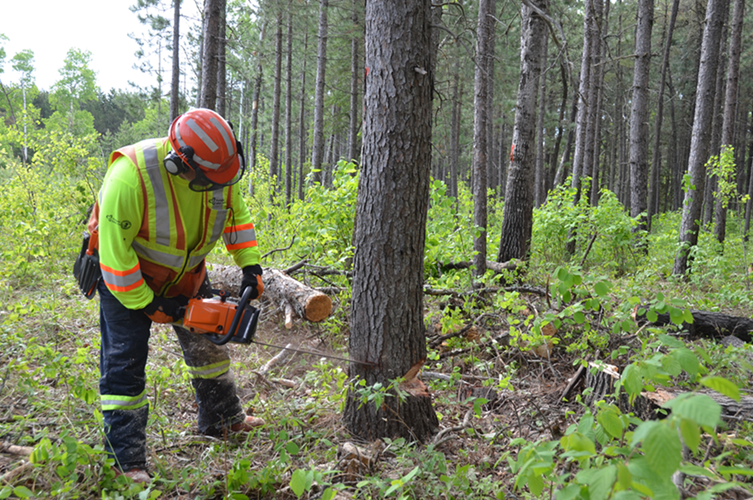
Struck-by hazards are the leading cause of fatalities in the forestry industry
The leading cause of death and serious injury to people cutting timber remains the most obvious one, being struck by a falling tree. Chicots, hang-ups and freestanding trees can be deathtraps. If you enter a work area or work within the danger zone of a chicot, hang-up or freestanding tree, you are exposing yourself to the danger of an uncontrolled falling tree.
What happened
A worker was fatally struck by a falling tree branch while working at a private residence in western Montreal. The worker was cutting trees in a backyard when the branch fell, knocking him unconscious. He was transported to hospital in critical condition, where his death was later confirmed.
Why it happened
While it is not confirmed this was a chicot, it is important to understand the risks they pose. A chicot is a tree that has become dry or rotten. This can result from natural aging, insect infestation, disease, climate conditions, or human activity. Brittle and unpredictable, chicots are a serious hazard in the woods. A gust of wind, equipment vibration, heavy snow, or removal of nearby trees may cause branches or the entire tree to suddenly fall, which can result in fatal consequences.
Prevention
Working within the danger zone of a chicot, hang-up, or freestanding tree exposes workers to the risk of an uncontrolled falling tree and is a violation of legal safety requirements. To reduce the risk:
- Chicots must be safely lowered to the ground before felling trees in the vicinity.
- If a chicot is intentionally left standing as a wildlife tree, no harvesting can occur within a distance equal to at least the height of the surrounding stand.
- Chainsaw and skidder operators in logging operations must be certified under the Ministry of Labour, Immigration, Training and Skills Development’s (MILTSD) mandatory Cutter-Skidder Modular Training Standards.
- Employers must provide workplace-specific training on all tasks performed, including safe felling of problem trees and procedures for dealing with hazards when working alone.
For detailed steps on how to identify and safely remove chicots, see Beware the chicot danger zone resource.
For more information on identifying and controlling risks from falling branches and chicots, contact your local health and safety specialist.
Related
Loggers: Beware the chicot danger zone | Workplace Safety North
Chicot Safety Brochure | Workplace Safety North
Top 10 Health and Safety Risks in Silviculture Sector | Workplace Safety North
Beware the chicot danger zone | Workplace Safety North
Experienced cutter killed by freestanding tree | Workplace Safety North
